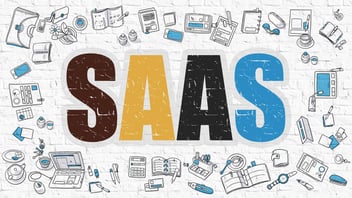This article explores the question: what is sales forecasting and why do sales teams need it?
We’ll start with a definition. Sales forecasting is the act of predicting what you will sell in a given period. Forecasts can be made for individual sales team members, whole teams, or an entire department.
Done well, forecasts allow for more effective decision making at all stages of an organisation. Salespeople can focus on revenue-generating activities, managers can allocate time more effectively, and higher-ups have more solid data on which to base organisational decisions.
Effective sales forecasting brings the following benefits to sales teams:
-
It provides structure and allows for a common set of goals to be established.
-
A proper sales forecast allows for synergy. It puts everyone on the same page: working toward clear goals as an organisation makes it easier and faster to identify and rectify problems; it gives decision makers better opportunities to grow; it means service-providing staff have enough resource to do what they need to do.
-
Having figures to aim for which are based in reality helps you evaluate performance on an ongoing basis. If your team is below the forecasted quota for a period, and the accuracy of the forecast has been previously proven, it allows for steps to be taken to get things back on track, rather than only realising at the end of the period. If the common culprits aren't to blame - recent departures, competitor campaigns, industry announcements, etc - you can dig deeper to find (and hopefully fix) the problem.
-
A clearer understanding of the whole sales process allows for post-sales support opportunities to be identified and leveraged.
The difference between the HubSpot CRM and Sales Professional
HubSpot CRM and Sales Professional both offer help with sales forecasting.
Each offers solutions that allow you to effectively report on sales activity. HubSpot CRM is designed for growing companies and includes out-of-the-box features to streamline various business processes, including sales forecasting and reporting. Sales Professional is the next step up, containing more - and more powerful - features.
The idea of the HubSpot CRM is to track everything and give you meaningful tools to analyse the resulting data. This allows for better forecasting, tighter processes, and access to the insights you need to grow your business.
If you’re not familiar, the HubSpot CRM does these things:
-
It keeps track of revenue - both forecast and real.
-
It logs all interactions with all prospects. This gives you a firm and centralised hand on your data, rather than tracking different things in different places and risking things slipping through the cracks.
-
It is quick, scalable and specialised.
The HubSpot CRM is available for free or through paid subscriptions. The free version contains a bunch of great features, like:
Essential reports to cover a range of business outcomes, described as the "basic building blocks of sales reporting". Including:
- Deal forecast reporting: a breakdown of forecast revenue for deals in your pipeline. A figure is reached by multiplying the deal amount by the probability of it closing.
- Sales performance reporting: a breakdown of contacts assigned and worked, as well as deals, created and won.
- Productivity: the amount of logged contact attempts within a specified timeframe, for at-a-glance information on your team's activity.
- Recent activity: detailed information on individual contacts and status of deals.
- Deals closed vs goal: a quick visual representation of how many deals are closing vs your goal quota.
- Integration with other software including email (Gmail, G Suite, most versions of Outlook)
- Email scheduling, templates, and tracking notifications - with usage limits on the latter two.
- Tracking of calls, meetings, and contact activity - with usage limits on the latter two.
- Effortless upgrade to other HubSpot packages, underpinned by the HubSpot CRM.
As you'd expect with a free tool, there are some limitations. HubSpot is generous and the free CRM definitely contains enough to suit many sales departments, but if you're looking for more power, the next level up - Sales Professional - may be a better fit.
Sales Professional is described as "the deal-making tools that help you get deeper insights into your prospects, automate the tasks you hate and close more deals faster".
All of its tools and features come with one goal: to increase the effectiveness of your sales team. These tools, combined with effective sales forecasting and reporting, could turn your team into the powerhouse it deserves to be.

Here are the extra tools and features found in HubSpot Sales Professional:
-
Custom report builder. Whereas the HubSpot CRM default reports cover a limited range of business outcomes, the Sales Professional package lets you build reports with custom parameters. This allows you to pull through, present, and analyse the data which is most relevant to your team.
-
Example reports are given on the HubSpot website point at the possibilities made available to you with the custom report builder:
-
Leaderboards to show the relative performance of each member of your sales team.
-
Funnels showing the number of deals at each stage, along with the historic and forecast conversion rates.
-
Detailed forecasts which drill further down into the data to show the in-depth performance of each member of your team.
-
Engagements: an individual breakdown of each team member's communications, so you can identify the gaps that may be reducing the number of closed deals.
-
Customisable essential reports. Respond to the specific needs of your team by customising default report templates.
-
Automated outreach with built-in features to prevent you from spamming anyone. Queued email campaigns, with caps on individual recipients, help you to nurture leads more easily.
-
Unlimited email template capacity, meaning you can test and compare multiple templates to see which ones perform best.
-
Suggestions on which leads to follow up, based on ongoing assessment of their behaviour and engagement.
The Reporting Add-On further increases the reporting power of the HubSpot software by increasing the number of dashboards you have, from 2 to 200. Each dashboard can have 10 reports, so with the Reporting Add-On, you are well and truly on your way to making your data work for you.

Sales forecasting best practices
Your desired outcome will determine best practices. Desired outcomes are things like:
-
Getting more sales
-
Achieving a higher close rate
-
Securing more repeat custom from high-value accounts
-
Gaining a more insightful analysis of sales data
Here are some models that can help you forecast revenue, along with the pros and cons of each:
Opportunity stage forecasting
You break down the number of deals at each stage of your pipeline, then multiply the value of each deal by the probability of a deal at that stage closing. Then you add all the numbers together, and that's your forecast sales figure.
Pros: Quick and easy
Cons: Can be inaccurate, as lots of nuanced information is discounted; relies on estimates; relies on historical data.
Length of sales cycle forecasting
Instead of looking at the probability of a deal closing by stage, you look at its age. The assumption here is that a long conversation with a prospect means they're more interested and more likely to convert.
Pros: Can take into account different sales cycles
Cons: Can be inaccurate, as nuanced information is discounted; relies on good pipeline management.
Intuitive forecasting
Or the Gut Feeling method. Salespeople are asked to estimate the likelihood of a deal closing and its value.
Pros: Takes into account the opinion of salespeople; no reliance on data.
Cons: Very hard to verify estimates, even with previous experience.
Historical forecasting
Here you look back on previous periods and make an assumption that you will earn at least as much, and preferably more, this time around. You can bake in extra assumptions - seasonality, the rate of growth, etc - but there are still shortcomings.
Pros: quick and easy; provides a good benchmark
Cons: does not account for variations in buyer demand or numerous other factors
Account level forecasting
If you sell frequently to the same accounts, you are able to draw on their historic sales behaviour to estimate future behaviour. This is not flawless, but the assumptions can be more accurate than generic historic forecasting.
Pros: Based on previous data from an understood relationship, so potentially more accurate
Cons: The assumptions are very specific and not necessarily suitable for other accounts
Territory level forecasting
Similar to the above, but geographical regions are analysed rather than individual accounts. This shines the light on a different set of assumptions and may provide another useful snapshot to make historical forecasting more accurate.
Pros: Another angle to refine broad historic forecasting
Cons: Not an implied similarity between the behaviour of accounts in the same region
Multi-variable analysis
Here you take on board multiple sources of data and methods of analysis at once, with the hope that they will cancel out (or at least reduce the impact of) their individual shortcomings.
Pros: More accurate
Cons: Relies on more data, so can take longer and cost more; relies on clean data, so your team will have to be diligent
Pipeline forecasting
The most in-depth and also the most likely to provide accurate numbers. This method takes into account all deals in your pipeline and cross-references them with each sales person's performance to create an accurate forecast for each.
Pros: More likely to provide accurate results; makes effective use of lots of data
Cons: Time-consuming
As we move down the list it becomes clear that accuracy is likely to improve with more data available, and with a better analysis of that data. The HubSpot CRM is a way to seamlessly track and monitor all sorts of data associated with your sales process, and using it allows for more accurate and effective forecasting and reporting as a result.
Understanding the assumptions you are making, and their potential shortfalls is important when forecasting. Using data correctly, ensuring your team are on the same page, and reviewing the situation on an ongoing basis will give you the power to continually improve your sales forecasts, and to continue to achieve the benefits we outlined at the start of this post.
We are marketing experts, and our expertise is acknowledged with a HubSpot Gold Certification. We'd love to help your business improve its sales forecasting and, as a result, its revenue and profitability.




